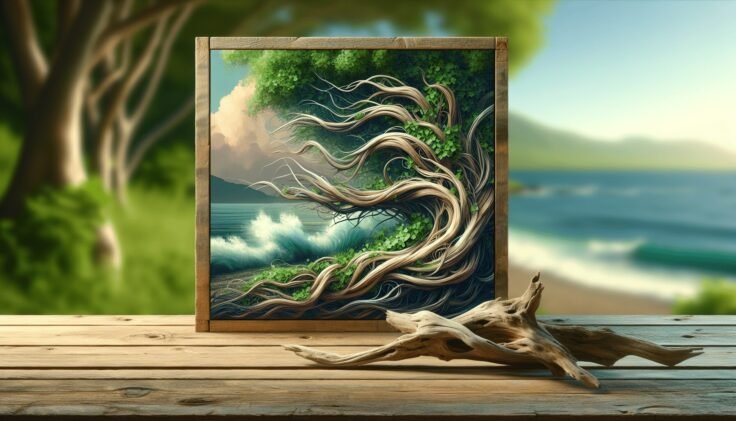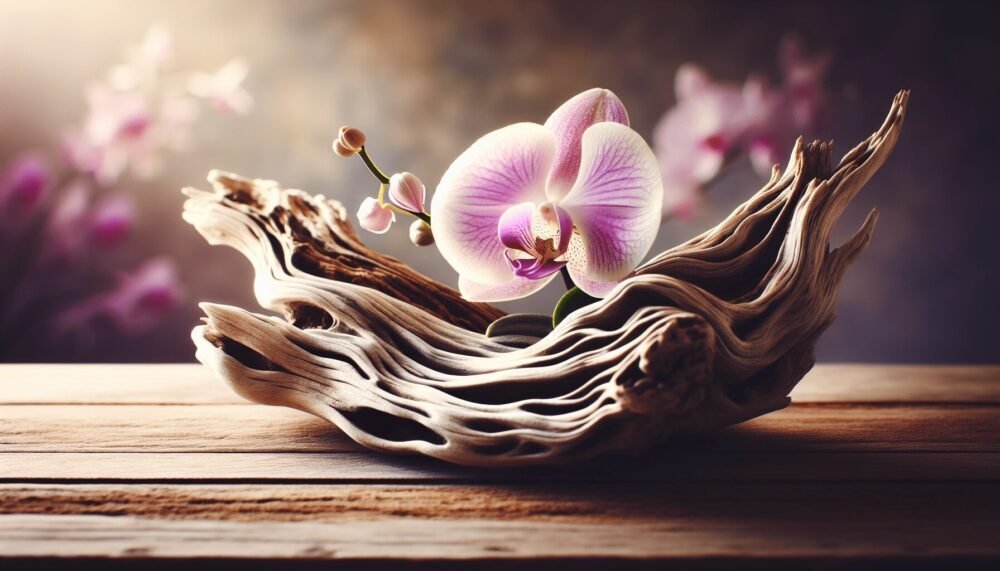Have you ever wandered through a lush garden and noticed how majestically some plants climb over rocks and structures, almost like nature’s tapestry? These enchanting displays often involve the Driftwood Climbing Plant, an easy-going, creative choice for those looking to add an artistic touch to their garden or indoor space. Let’s journey through everything you need to know about this captivating plant and how you can make it a part of your natural decor.
What Is a Driftwood Climbing Plant?
Understanding the Basics
The Driftwood Climbing Plant isn’t a specific species but a creative gardening technique. It involves using driftwood—a natural, weather-worn wood often found on beaches—combined with climbing plants to produce a stunning natural art piece. This method leverages the organic beauty of driftwood and the natural climbing and winding abilities of certain plants, resulting in an arrangement that is both visually appealing and texturally intriguing.
Why Choose Driftwood?
Driftwood offers unique shapes, aged textures, and a story of its own, having been sculpted by nature. This makes it an exquisite backdrop for plants, creating a harmonious and natural appearance that is hard to replicate with manufactured materials. Its neutral tones and variance in size and shape makes it adaptable to many environments, adding flair both indoors and outdoors.
Selecting the Right Plant for Your Driftwood
Which Plants Work Best?
When considering plants for your driftwood masterpiece, it’s essential to pick those with climbing or creeping habits, ensuring they can naturally wrap around the driftwood. Popular choices include:
- Philodendron: Known for its heart-shaped leaves and adaptability.
- Pothos: A hardy plant that thrives with minimal care and offers vibrant foliage.
- Ivy: Offers lush foliage and can quickly cover surfaces.
Each of these plants brings its aesthetic appeal, from leaf shape to growth habit, allowing for personalization based on your taste.
Plant Traits to Consider
While choosing your plant, bear in mind a few key characteristics:
- Growth Rate: Determine how quickly you want your piece to mature and reflect the natural beauty.
- Leaf Size and Color: Larger leaves can create a dramatic effect, whereas smaller ones can maintain a delicate intricacy.
- Maintenance Needs: Ensure that the plant you select aligns with your ability to care for it, including lighting, watering, and temperature conditions.

Setting Up Your Driftwood Climbing Plant
Preparing the Driftwood
Before you pair your driftwood with its botanical partner, some preparation is essential. First, clean the driftwood to remove any debris or salt residues if sourced from the ocean. This might involve scrubbing and rinsing it with fresh water. Once cleaned, consider treating the wood to avoid any pests or decay, typically using natural preservatives or allowing it to dry thoroughly in the sun.
Anchoring Your Plant
The next step is introducing the climbing plant to the driftwood. You can either plant the base directly in the soil surrounding the wood or use other methods, like moss or coco coir, to secure it. Attach the plant delicately to the driftwood, using string or ties that won’t damage the plant, encouraging the plant to wrap its stems around naturally.
Caring for Your Living Art
Light and Water Requirements
Ensuring your driftwood climbing plant thrives entails paying attention to basic plant care elements, specifically light and water. Understand the specific needs of your chosen plant species. Generally, placing them in bright, indirect light and providing moderate water is beneficial. Overwatering is a common problem, leading to root rot, so well-drained soil and careful watering are crucial.
Pruning and Maintenance
To encourage growth and manage the plant’s health, regular pruning is necessary. Trim excess growth or dead leaves to redirect energy to healthier parts and maintain the desired aesthetic profile. It’s important to occasionally check the ties used to secure the plant, ensuring they don’t cut into the plant and allowing room for growth.

Enhancing the Environment
Providing Ideal Soil Conditions
The grading and type of soil can have a profound effect on the success of your plant. Choose a potting mix that supports the needs of the climbing plant, ensuring good drainage. In many cases, mixing in perlite or orchid bark can enhance soil structure and performance.
Humidity and Temperature Considerations
Both humidity and temperature play a critical role in the welfare of your indoor plantation. Driftwood climbing plants often thrive in humid conditions reminiscent of their native habitats. Consider using a pebble tray or a humidifier to raise humidity levels, particularly in drier environments. Be mindful of consistent temperatures to avoid shocking the plant’s system.
Creative Ways to Display Your Driftwood Climbing Plant
Indoor Displays
Within your home, a driftwood climbing plant serves as a living sculpture, beautifully blending into the decor. Consider varying the height at which the display is placed; for example, hanging from a wall for an art piece effect or sitting on a stand for a tabletop centerpiece, each choice transforming the ambiance differently.
Outdoor Incorporations
If you’re interested in an outdoor display, your options become even broader. Integrate your driftwood climbing plant into the landscape with existing features like garden paths, ponds, or rockeries. Remember, outdoor conditions might change with the seasons, so choose a placement that provides some protection from extreme conditions.
Long-Term Care and Troubleshooting
Common Issues and Fixes
With long-term care comes occasional challenges. Leaf drop, discoloration, or slow growth may indicate issues like improper light, pests, or nutrient deficiencies. Regular monitoring and prompt adjustments can prevent more significant problems down the road.
Repotting Considerations
Over time, your plant may require repotting to encourage new growth and ensure root health. During repotting, inspect the roots and trim any that are rotten while refreshing the soil. This is an excellent opportunity to reassess the driftwood anchor and make any needed modifications.
The Benefits of a Driftwood Climbing Plant
Aesthetic Appeal
A driftwood climbing arrangement is a work of botanical art, offering a conversation starter and a touch of nature’s elegance to any space. Its living, changing nature means its appearance will evolve over time, creating an ever-changing art display.
Environmental and Psychological Benefits
Introducing plants into your environment can enhance air quality and provide a sense of tranquility and well-being. The subtle presence of nature indoors can reduce stress and promote creativity, adding yet another layer of value to your driftwood climbing plant.
Personalizing Your Plant Display
Experimenting with Arrangement
Don’t shy away from experimenting with different layouts, plant colors, or combining multiple plants on a single piece of driftwood. Each variation tells a unique story, reflecting your taste and preference.
Seasonal Decor Updates
Consider adapting your plant’s surroundings with seasonal changes. Adding natural elements like moss or decorative stones can align with seasonal aesthetics, offering a dynamic and ever-fresh appearance.
Conclusion
The Driftwood Climbing Plant merges art and nature, enabling you to cultivate an inviting and harmonious setting in or around your home. With a little creativity and regular care, you can craft an astonishing living piece of art that not only beautifies your space but also brings a sense of serenity to those who live or interact with it. Enjoy the process, enjoy the journey, and transform your space into a sanctuary worth celebrating.













